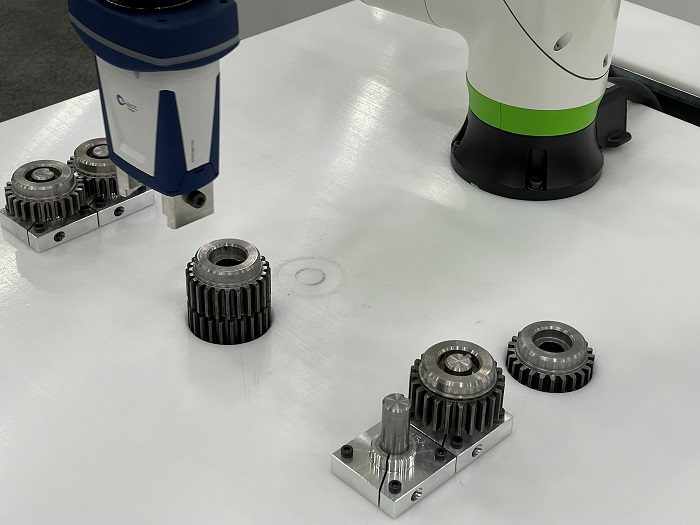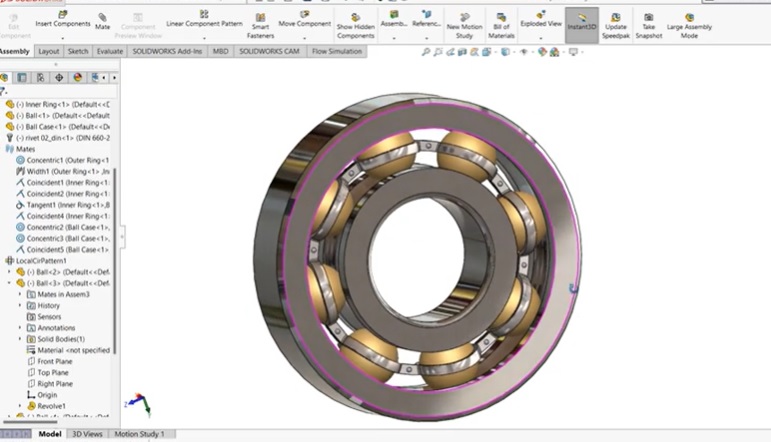Walk into any gear manufacturing facility and you'll find legacy equipment that has been running successfully for decades. While these machines offer insight from a historical perspective, it's the equipment moving gears through production cells hinting at the factory of the future and the role robotics and automation will play. The skilled labor challenge is not going away, in fact, it's getting more complicated as management navigates ways to keep shipments rolling out in a timely and productive manner - enter the robot in the form of an arm unit, collaborative series or part of an automation cell. Robotic integration on the shop floor will be necessary to keep up with future manufacturing trends and challenges.
AGMA Offers Free Webinar on Robot Simulation
Manufacturers in every industry are adopting robotic automation at an accelerating rate. The investment required for automation is often significant and comes with a host of options. What type or size of robot should be selected? What throughput can be achieved through this new system? Will the workcell fit into my production line?
All of these questions can be answered with Robot Simulation Software. This multi-function tool is invaluable in modeling complicated manufacturing systems. In addition to explaining how Robot Simulation Software can be utilized, this presentation will provide case studies that demonstrate how simulation early in the project can avoid later problems with Robot integration.
“Robot Simulation: Make the Most of Your Investment in Automated Manufacturing” is a free webinar from AGMA’s Emerging Technology Series taking place October 5, 2022, from 1:00 to 2:00 pm (EST). The presenter is Charles Gales, manager of automation sales, Weldon Solutions. Register here:
Yaskawa Offers Plug and Play Cobot Series
Highly reliable, the six-axis HC10DTP and HC20DTP collaborative robots enrich easy capability for Yaskawa’s HC-series line. Hand-guided programming allows users to direct teach points without a pendant, and an ISO standard tool flange and electrical connections facilitate a plug and play approach for easy deployment of the robot system.

Ideal for a wide variety of collaborative applications including assembly, dispensing, machine tending, material handling, packaging, and welding, the HC10DTP and HC20DTP enable humans to safely work with robots. Power and Force Limiting (PFL) technology constantly monitors force to quickly and safely react to contact, and advanced pinchless geometry provides the utmost safety. A thru-arm Category 6 Ethernet cable, I/O cable and dual air lines eliminate external utilities while offering fast, safe and easy setup of a wide variety of communication options for tooling.
Made of cast aluminum for durability, both robots are IP67-rated and equipped for use in damp or splash-prone environments. Each model features an easy-to-clean surface, allowing utilization in sanitary environments where wipe or wash is required. NSF H1 certified food-grade grease is included as standard, enabling use in settings where there is a possibility of incidental food contact.
Meeting established safety standards (ISO 13849-1) and complying to ISO TS15066, each robot offers four modes of collaborative operation and can easily shift between collaborative speed in PFL mode or full speed in industrial mode, optimizing cycle times based on risk assessment and process requirements.
Liebherr Examines the Potential of ‘Random Bin Picking’
The story of “random bin picking” at Liebherr began about ten years ago. Part of a major order for two manufacturing lines involved the automation of the line entrance using bin picking. At the time, the technology was still in its infancy. “Liebherr really wanted this order,” says Jürgen Groß, sales manager, Cells and Flexible Manufacturing Systems at Liebherr. Together with the Fraunhofer Institute for Manufacturing Engineering and Automation (IPA), Liebherr developed an overall solution: “Fraunhofer had the technology expertise, we had the application expertise. This enabled us to successfully realize the order.”
“Bin picking” is one of the most demanding applications in industrial automation. Removing parts which are provided in a disorderly way from containers, and their correct, oriented placement into a workpiece carrier is child's play for the human brain. For the robot, on the other hand, it is a Herculean task. Due to the “chaotic” initial situation, this requires complex interaction between the image recognition system, software, gripping technology and robot.

For companies, the application is worthwhile for two reasons: Firstly, automation with flexible robot systems increases productivity and reduces unit costs and secondly, operating personnel are relieved of monotonous and strenuous physical tasks and can take on value-added tasks. However, the supposed challenges of bin picking often appear to be a hurdle, especially for smaller companies.
“We can alleviate this concern for users,” says Groß reassuringly. “Because unlike many other providers, we not only supply software and object recognition systems, but also know exactly what the requirements of the application side are.”
Reliable, robust vision systems and the LHRobotics.Vision software ensure smooth object identification and selection, collision-free withdrawal of parts and robot path planning all the way to the deposit point.
Specially developed grippers extend the robot’s degrees of freedom by adding a seventh or eighth additional axis and ensure complete emptying of the transport container even for parts with challenging geometries. Temporary storage buffers any incorrect gripping – for example, if parts get caught – and ensures that the cycle times of the machines or production equipment are adhered to. Liebherr offers the option of testing the process in advance virtually or on real test cells at the Kempten Tech Center.
The highest demands are placed on mechanical gripping in connection with loading into a repicking station or directly into the clamping fixture. Possible collision points must be precisely defined and the parameters for the robot's path planning must be calculated exactly. All this is handled by the LHRobotics.Vision software, which has been further developed by Liebherr for industrial use – supported by a user-friendly and intuitive user interface. Artificial intelligence (AI) simplifies the fitting of new components into the bin picking process – a quantum leap that makes it possible for “everyone” to use the technology.
Liebherr's total package has already proven itself in numerous applications in powertrain manufacturing. There is further potential in body construction, assembly, and logistics. Groß is looking to the future: “Bin picking is by no means limited to machining. Liebherr is also building bridges into other industries, for example in component data provision or collaborative systems in which robots interact with humans.”
For related articles on automation visit the following:
powertransmission.com/articles/8818-your-robotic-coworker
powertransmission.com/articles/8538-rapid-advancement-at-automate-2022
powertransmission.com/articles/8539-breaking-the-4th-industrial-wall







